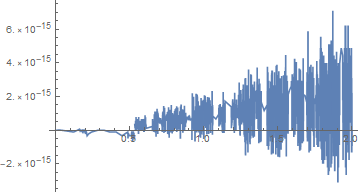Here is a (mostly) general routine that (tries to) convert a one-dimensional InterpolatingFunction[] into an equivalent Piecewise[] function:
convertToPiecewise::umet = "Unknown interpolation method `1`.";
SetAttributes[convertToPiecewise, Listable];
convertToPiecewise[iF_InterpolatingFunction, x_,
OptionsPattern[{"Extrapolation" -> False,
InterpolationOrder -> Automatic}]] :=
Module[{bf, extQ, imet, kp, makePP, met, nodes, perQ, pieces, pts, vand, xt},
Switch[met = iF["InterpolationMethod"],
"Hermite" | "Chebyshev",
pts = Transpose[{Flatten[iF["Grid"]], iF["ValuesOnGrid"]}],
"BSpline",
bf = First[Cases[iF, _BSplineFunction, ∞]];
pts = {#, bf[#]} & /@ Union[First[bf["Knots"]]],
_,
Message[convertToPiecewise::umet, met]; Return[$Failed, Module]];
kp = OptionValue[InterpolationOrder];
If[kp === Automatic,
(* repeated differentiation to determine maximal order *)
kp = If[met =!= "BSpline",
First[NestWhile[Derivative[1],
Derivative[First[iF["InterpolationOrder"]] +
1][iF],
(Norm[#["ValuesOnGrid"], ∞] > 0) &]
["DerivativeOrder"]] - 1,
kp = First[bf["Degree"]]]];
If[kp > 0, (* normal case *)
(* use equispaced nodes in the exact case, and Chebyshev otherwise *)
nodes = Range[kp - 1]/kp;
If[MatrixQ[pts, InexactNumberQ],
nodes = N[Haversine[π nodes], Precision[pts]]];
vand = LinearAlgebra`Private`VandermondeSolve[##, Transpose -> True] &;
makePP[{{x1_, y1_}, {x2_, y2_}}] := Module[{h = x2 - x1, ip},
ip = Transpose[Join[{{x1 - x1, y1}},
{#, iF[x1 + #]} & /@ (h nodes), {{h, y2}}]];
(* solve for interpolating polynomial coefficients *)
{Fold[(#1 (xt - x1) + #2) &, Reverse[vand @@ ip]], x1 <= xt <= x2}];
pieces = makePP /@ Partition[pts, 2, 1],
(* zero-order interpolation *)
pieces = Transpose[{Rest[pts[[All, -1]]],
#1 <= xt <= #2 & @@@
Partition[pts[[All, 1]], 2, 1]}]];
perQ = TrueQ[First[iF["Periodicity"]]];
If[! perQ, extQ = OptionValue["Extrapolation"];
If[! ListQ[extQ], extQ = {extQ, extQ}]; extQ = TrueQ /@ extQ;
If[extQ[[1]], pieces[[1, 2]] = Delete[pieces[[1, 2]], 1]];
If[extQ[[2]], pieces[[-1, 2]] = Delete[pieces[[-1, 2]], 3]]];
Piecewise[pieces /. xt ->
If[! perQ, x, Mod[x, #2 - #1, #1] & @@ First[iF["Domain"]]]]]
(N.B. replace LinearAlgebra`Private`VandermondeSolve[] with LinearAlgebra`VandermondeSolve[] when using the function in versions before 11.2.)
It should work for InterpolatingFunction[] objects that come from Interpolation[], ListInterpolation[], or FunctionInterpolation[]. It mostly works for InterpolatingFunction[] objects from NDSolve[], but may fail in some cases. (If you find an example, please tell me!)
Some examples:
if1 = Interpolation[{1, 3, 5, 2, 1}, InterpolationOrder -> 1];
Here, we tell convertToPiecewise[] to use the rightmost piece for extrapolation to the right:
convertToPiecewise[if1, x, "Extrapolation" -> {False, True}]
$$\begin{cases}
2 (x-1)+1 & 1\leq x\leq 2 \\
2 (x-2)+3 & 2\leq x\leq 3 \\
5-3 (x-3) & 3\leq x\leq 4 \\
6-x & 4\leq x \\
0 & \mathtt{True}
\end{cases}$$
Convert an InterpolatingFunction[] with irregular spacing:
if2 = Interpolation[{{0, 0}, {0.1, .3}, {0.5, .6}, {1, -.2}, {2, 3}}, Method -> "Spline"];
pw2[x_] = convertToPiecewise[if2, x];
Plot[if4[x] - pw4[x], {x, 0, 2}, PlotRange -> All]

Convert the result of NDSolve[]:
if3 = NDSolveValue[{g'[x] == Sin[2 x] - g[x], g[0] == 1}, g, {x, 0, 6}];
pw3[x_] = convertToPiecewise[if3, x];
Plot[if3[x] - pw3[x], {x, 0, 6}, PlotRange -> All]

Another NDSolve[] example. The previous version of the routine was unable to handle this.
if4 = NDSolveValue[{y''[t] == 10 (1 - y[t]^2) y[t] - y[t], y[0] == 2, y'[0] == 0},
y, {t, 0, 6}, Method -> "StiffnessSwitching"];
pw4[x_] = convertToPiecewise[if4, x];
Plot[if4[x] - pw4[x], {x, 0, 6}, PlotRange -> All]















InterpolatingFunctionusing "Methods" as I outlined here: (19042) however that only shows the data that is used and the kind of interpolation, not the actual function itself. You might find value inInterpolatingPolynomial, though it is not the same asInterpolation. $\endgroup$InterpolatingPolynomialinstead ofInterpolation. $\endgroup$